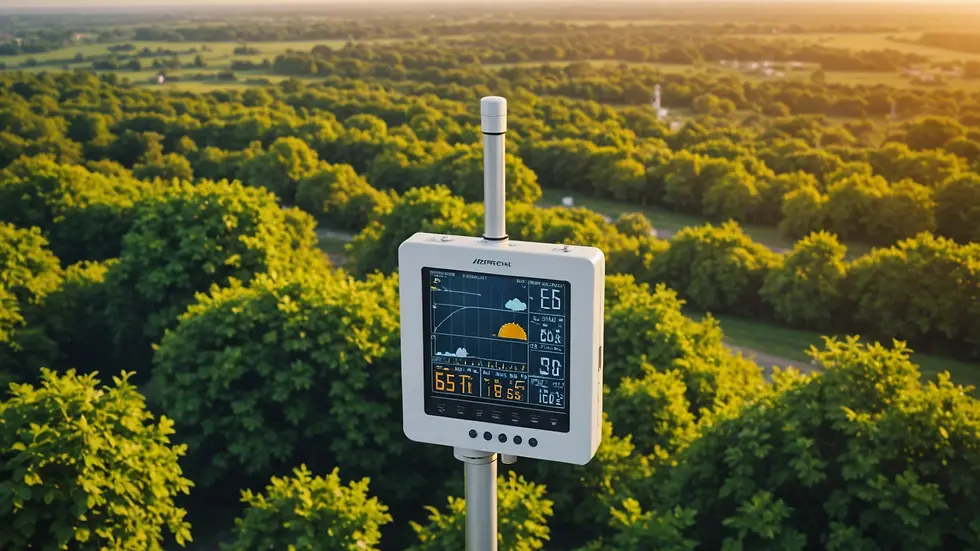How to Stay Safe During Extreme Wind Chill Conditions
- Joshua Bailey

- Mar 10
- 3 min read
As temperatures drop and wind speeds increase, the combination can create an extreme weather condition known as wind chill. This phenomenon can be quite dangerous and is largely underestimated. It is vital to understand how to protect yourself and your loved ones during extreme wind chill conditions to avoid severe health risks.

Winter often brings beautiful scenes, but it can also pose risks.
Wind Chill Safety
Wind chill is a measure of how cold it feels when the effects of wind are factored in. The wind pulls heat away from the body, making it feel significantly colder than the actual temperature. This can result in frostbite and hypothermia if proper precautions are not taken.
The wind chill factor becomes increasingly important as temperatures drop to near or below freezing. For example, at a temperature of 20°F with a wind speed of 30 mph, the effective temperature can feel like 5°F.
How Serious is Wind Chill?
Wind chill can lead to serious health issues if not addressed. Frostbite can occur on exposed skin in as little as 30 minutes when temperatures drop drastically. This is particularly concerning for children and the elderly, who may not recognize the signs of extreme cold or may not be able to take protective actions swiftly.
Statistics show that, according to the National Weather Service, hypothermia can begin to set in when body temperature drops below 95°F. Without immediate treatment, hypothermia can become life-threatening.

Proper winter gear is essential for staying warm during extreme conditions.
Stay Informed and Prepared
One of the best ways to stay safe during extreme wind chill conditions is to stay informed. Check the weather forecasts regularly and understand the wind chill warning levels. Be sure to listen to local authorities and take heed of any warnings that suggest staying indoors or minimizing outdoor activities.
Here are some actionable tips to prepare when extreme wind chill conditions are predicted:
Create an emergency kit: Include warm clothing, blankets, food, and water. Flashlights and batteries should not be forgotten.
Stock up on non-perishable foods: Canned goods, dried fruits, and instant meals can be food staples during extreme weather.
Ensure your heating system is functional: Have it checked before winter season. A backup heating source is also a good idea.
Dress Appropriately
Dressing for the cold is crucial. It is important to layer your clothing to trap heat while allowing moisture to escape. Here is a suggested layering system:
Base Layer: This should fit snugly and be made of moisture-wicking material. Cotton is not recommended as it retains moisture.
Insulation Layer: Use fleece or down to provide warmth.
Outer Layer: Make sure this is windproof and waterproof to protect against harsh elements.
Additional items such as warm gloves, hats, scarves, and insulated boots are essential to protect extremities. Remember to check regularly on those who may need assistance, like the elderly and those with health problems.

Keeping warm indoors can help prevent the effects of wind chill.
Recognize the Signs of Hypothermia and Frostbite
Awareness of the signs and symptoms of frostbite and hypothermia can save lives.
Frostbite Symptoms:
Numbness or tingling sensation in fingers, toes, ears, or nose.
Skin that appears white or grayish in color.
Hypothermia Symptoms:
Shivering, which may stop as body temperature drops.
Confusion or sleepiness, along with slurred speech.
If you notice any of these symptoms in yourself or someone else, it is critical to take action immediately. Move to a warmer location, remove any wet clothing, and cover the individual with blankets while providing warm beverages if possible.
Be Cautious Outdoors
It is best to limit outdoor activities during extreme wind chill conditions. However, if you must go outside, ensure to:
Keep trips short: Plan errands and outdoor work wisely, limiting time spent exposed to wind chill.
Travel with a partner: If an emergency occurs, someone can assist immediately.
Stay visible: If you're walking outside, wear bright or reflective clothing. This ensures drivers can see you even in winter weather.
By taking these precautions, you can significantly reduce your risk when facing potentially dangerous wind chills.
Final Thoughts
Wind chill can be more than just an annoyance; it can be dangerous. Preparing effectively can keep you and your loved ones safe during extreme weather. From dressing appropriately to knowing the signs of hypothermia and frostbite, awareness and preparation are key.
As winter approaches, pay attention to local forecasts and understand the potential impact of dangerous wind chills on your daily life. Equip yourself with knowledge and remain vigilant.




Comments